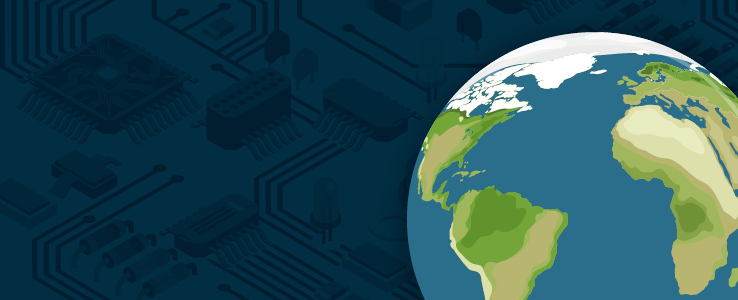When evaluating flagship smartphones, and are often the most critical factors. This comparison video from Nick Ackerman provides more insights into the Samsung Galaxy S25 Ultra, OnePlus 13, and iPhone 16 Pro Max, analyzing their capabilities in boot-up times, biometric unlocking, multitasking, gaming benchmarks, and camera functionality. The results highlight the Galaxy S25 Ultra as the overall leader, with the OnePlus 13 closely trailing, while the iPhone 16 Pro Max lags in certain areas but excels in others.
The time it takes for a smartphone to power on can be a telling indicator of its internal efficiency. Here’s how the three devices perform: : The fastest boot-up time at 18.58 seconds, attributed to its overclocked processor and optimized software.

: A competitive 22.32 seconds, offering a swift and reliable startup experience. : The slowest at 29 seconds, prioritizing system stability over raw speed.
The Galaxy S25 Ultra’s superior optimization ensures users can access their device quickly, making it the leader in this category. Biometric unlocking has become a cornerstone of modern smartphone usability, combining convenience with security. Here’s how the devices compare: : The fastest in both facial recognition and fingerprint unlocking, offering near-instant access for users.
: Slightly slower but maintains a balance between speed and accuracy, making sure reliable performance. : The slowest, focusing on seamless integration and user experience rather than prioritizing speed. While all three devices deliver secure unlocking, the stands out for its responsiveness, making it ideal for users who prioritize quick access.
Efficient app performance and multitasking are essential for productivity and seamless user experiences. Here’s the breakdown: : Equipped with an overclocked chip and 12GB of RAM, it leads in rapid app launches and fluid multitasking, even under heavy workloads. : With 16GB of RAM, it offers competitive performance, smooth animations, and minimal lag during multitasking.
: While polished and optimized, its 8GB of RAM limits its multitasking capabilities compared to its rivals. The Galaxy S25 Ultra emerges as the top choice for users who demand peak performance in multitasking scenarios, while the OnePlus 13 offers a strong alternative with its higher RAM capacity. For gaming enthusiasts, performance benchmarks are critical in determining a smartphone’s suitability.
Here’s how the devices perform: : Excels with the highest scores in 3D Mark gaming tests and optimized gaming modes, making it the top choice for gamers. : A close second, using its multi-core processing power to deliver a strong gaming experience. : Reliable but struggles with frame rates and overall gaming benchmarks, making it less ideal for demanding games.
The takes the crown in gaming, offering the best experience for high-performance gaming needs, while the Galaxy S25 Ultra remains a solid contender. Camera performance is a key differentiator for many users, and speed plays a significant role in capturing the perfect shot. Here’s how the devices compare: : Leads with the fastest shutter speed and smooth lens transitions, making sure a seamless photography experience.
: It offers faster zooming capabilities and a quicker shutter speed than the Galaxy S25 Ultra. : It is slightly slower but compensates with competitive zoom functionality and overall versatility. Each device caters to different photography priorities, but the shines in precision and speed, making it the go-to choice for photography enthusiasts.
Benchmark tests provide an objective measure of a smartphone’s processing power and overall performance. Here’s how the devices rank: : The iPhone 16 Pro Max outperforms its competitors, showcasing Apple’s expertise in single-core optimization. : The Galaxy S25 Ultra takes the lead, demonstrating superior multi-threaded performance.
: The OnePlus 13 achieves the highest scores, followed by the Galaxy S25 Ultra, with the iPhone 16 Pro Max trailing. These results highlight the unique strengths of each device, with the Galaxy S25 Ultra excelling in multi-core tasks, the OnePlus 13 dominating gaming benchmarks, and the iPhone 16 Pro Max leading in single-core performance. Each smartphone excels in specific areas, making them suitable for different user needs: : The best all-around performer, excelling in speed, multitasking, and multi-core processing power.
Its balanced capabilities make it the most versatile option. : A strong contender with exceptional gaming performance, fast biometrics, and competitive multitasking, offering excellent value for its price. : While polished and reliable, it lags in speed and gaming optimization, making it less competitive in this comparison.
The Samsung Galaxy S25 Ultra emerges as the fastest and most versatile device, excelling across multiple performance categories. The OnePlus 13 offers a compelling alternative, particularly for gamers and those seeking value for money. Meanwhile, the iPhone 16 Pro Max, though dependable and refined, shows room for improvement in speed and gaming capabilities.
Your choice ultimately depends on your priorities. If you value all-around performance, the Galaxy S25 Ultra is the clear winner. For gaming enthusiasts, the OnePlus 13 is a strong contender.
However, if camera precision and a polished user experience are your focus, the iPhone 16 Pro Max remains a solid option. Unlock more potential in by reading previous articles we have written. Source & Image Credit:.
Technology

Speed Comparison: Galaxy S25 Ultra OnePlus 13 and iPhone 16 Pro Max

When evaluating flagship smartphones, speed and performance are often the most critical factors. This comparison video from Nick Ackerman provides more insights into the Samsung Galaxy S25 Ultra, OnePlus 13, and iPhone 16 Pro Max, analyzing their capabilities in boot-up times, biometric unlocking, multitasking, gaming benchmarks, and camera functionality. The results highlight the Galaxy S25 [...]The post Speed Comparison: Galaxy S25 Ultra OnePlus 13 and iPhone 16 Pro Max appeared first on Geeky Gadgets.















